Deep Learning-Based Inverse Design of Stochastic-Topology Metamaterials for Radar Cross Section Reduction
Abstract
1. Introduction
2. Theories and Methods
2.1. Stochastic Topology Metamaterials
2.2. Deep Learning Approach
2.2.1. CBAM-VAE
2.2.2. Transformer Predictor
2.3. Data Gathering and Model Training
3. Result and Discussion
3.1. Deep Learning Network
3.2. Inverse Design of 1-Bit Coding Metamaterials
- (1)
- The transformer predictor predicts EM responses for current latent variables y;
- (2)
- The MSE between predictions and targets is computed;
- (3)
- Optimal latent vector is recorded when new minimum MSE occurs;
- (4)
- Latent vectors are updated via backpropagation.
3.3. Discussion
4. Conclusions
Author Contributions
Funding
Informed Consent Statement
Data Availability Statement
Conflicts of Interest
References
- Wang, H.L.; Zhang, Y.K.; Zhang, T.Y.; Ma, H.F.; Cui, T.J. Broadband and programmable amplitude-phase-joint-coding information metasurface. ACS Appl. Mater. Interfaces 2022, 14, 29431–29440. [Google Scholar] [CrossRef]
- Xue, J.; Jiang, W.; Gong, S. Chessboard AMC surface based on quasi-fractal structure for wideband RCS reduction. IEEE Antennas Wirel. Propag. Lett. 2017, 17, 201–204. [Google Scholar] [CrossRef]
- Sun, J.; Zhu, L.; Hao, Z.; Kuai, X.; Cao, Q. Design and application of the switchable electric/magnetic conductor antenna. IEEE Trans. Antennas Propag. 2023, 71, 7102–7112. [Google Scholar] [CrossRef]
- Phon, R.; Lee, M.; Lor, C.; Lim, S. Multifunctional reflective metasurface to independently and simultaneously control amplitude and phase with frequency tunability. Adv. Opt. Mater. 2023, 11, 2202943. [Google Scholar] [CrossRef]
- Cui, T.J.; Qi, M.Q.; Wan, X.; Zhao, J.; Cheng, Q. Coding metamaterials, digital metamaterials and programmable metamaterials. Light. Sci. Appl. 2014, 3, e218. [Google Scholar] [CrossRef]
- Liu, C.; Ma, Q.; Luo, Z.J.; Hong, Q.R.; Xiao, Q.; Zhang, H.C.; Miao, L.; Yu, W.M.; Cheng, Q.; Li, L.; et al. A programmable diffractive deep neural network based on a digital-coding metasurface array. Nat. Electron. 2022, 5, 113–122. [Google Scholar] [CrossRef]
- Li, L.; Jun Cui, T.; Ji, W.; Liu, S.; Ding, J.; Wan, X.; Bo Li, Y.; Jiang, M.; Qiu, C.W.; Zhang, S. Electromagnetic reprogrammable coding-metasurface holograms. Nat. Commun. 2017, 8, 197. [Google Scholar] [CrossRef]
- Xi, Z.; Lu, X.; Shen, T.; Zou, C.; Chen, L.; Guo, S. Research on Design Method of Multilayer Metamaterials Based on Stochastic Topology. Materials 2023, 16, 5229. [Google Scholar] [CrossRef]
- Gu, P.; Cao, Z.; He, Z.; Ding, D. Design of ultrawideband RCS reduction metasurface using space mapping and phase cancellation. IEEE Antennas Wirel. Propag. Lett. 2023, 22, 1386–1390. [Google Scholar] [CrossRef]
- Hao, H.; Du, S.; Zhang, T. Small-size broadband coding metasurface for RCS reduction based on particle swarm optimization algorithm. Prog. Electromagn. Res. M 2019, 81, 97–105. [Google Scholar] [CrossRef]
- Wang, P.; Wei, Z.; Wu, T.; Jiang, W.; Hong, T.; Pedersen, G.F.; Shen, M. A machine learning framework for the design of STCDME structures in RIS applications. IEEE Trans. Microw. Theory Tech. 2023, 72, 1467–1479. [Google Scholar] [CrossRef]
- Naseri, P.; Hum, S.V. A generative machine learning-based approach for inverse design of multilayer metasurfaces. IEEE Trans. Antennas Propag. 2021, 69, 5725–5739. [Google Scholar] [CrossRef]
- Niu, C.; Phaneuf, M.; Qiu, T.; Mojabi, P. A deep learning-based approach to design metasurfaces from desired far-field specifications. IEEE Open J. Antennas Propag. 2023, 4, 641–653. [Google Scholar] [CrossRef]
- Gu, Z.; Li, D.; Wu, Y.; Fan, Y.; Yu, C.; Chen, H.; Li, E.P. A solution to the dilemma for FSS inverse design using generative models. IEEE Trans. Antennas Propag. 2023, 71, 5100–5109. [Google Scholar] [CrossRef]
- Jiang, W.; Zhu, Y.; Yin, G.; Lu, H.; Xie, L.; Yin, M. Dispersion relation prediction and structure inverse design of elastic metamaterials via deep learning. Mater. Today Phys. 2022, 22, 100616. [Google Scholar] [CrossRef]
- Huang, Y.; Feng, N.; Cai, Y. Artificial intelligence-generated terahertz multi-resonant metasurfaces via improved transformer and CGAN neural networks. J. Light. Technol. 2023, 42, 1518–1525. [Google Scholar] [CrossRef]
- Lin, H.; Hou, J.; Wang, Y.; Tang, R.; Shi, X.; Tian, Y.; Xu, W. Machine-learning-assisted inverse design of scattering enhanced metasurface. Opt. Express 2022, 30, 3076–3088. [Google Scholar] [CrossRef]
- Wang, P.; Li, Z.; Luo, C.; Wei, Z.; Wu, T.; Jiang, W.; Hong, T.; Parchin, N.O.; Pedersen, G.F.; Shen, M. Preprocessing-based fast design of multiple EM structures with one deep neural network. IEEE Trans. Antennas Propag. 2024, 72, 4298–4310. [Google Scholar] [CrossRef]
- Qu, M.; Chen, J.; Su, J.; Gu, S.; Li, Z. Design of metasurface absorber based on improved deep learning network. IEEE Trans. Magn. 2023, 59, 1–6. [Google Scholar] [CrossRef]
- You, X.C.; Lin, F.H. Inverse design of reflective metasurface antennas using deep learning from small-scale statistically random pico-cells. Microw. Opt. Technol. Lett. 2024, 66, e34068. [Google Scholar] [CrossRef]
- Wang, J.; Fan, C.; Liao, Y.; Zhou, L. Pattern-to-absorption prediction for multilayered metamaterial absorber based on deep learning. IEEE Microw. Wirel. Technol. Lett. 2024, 34, 463–466. [Google Scholar] [CrossRef]
- Vaswani, A.; Shazeer, N.; Parmar, N.; Uszkoreit, J.; Jones, L.; Gomez, A.N.; Kaiser, Ł.; Polosukhin, I. Attention is all you need. Adv. Neural Inf. Process. Syst. 2017, 30, 1–11. [Google Scholar]
- Niu, C.; Kelly, M.; Mojabi, P. An encoder-only transformer to generate power patterns from far-field performance criteria. In Proceedings of the 2022 16th European Conference on Antennas and Propagation (EuCAP), Madrid, Spain, 27 March–1 April 2022; pp. 1–4. [Google Scholar]
- Ma, C.; Wang, Z.; Zhang, H.; Yang, F.; Chen, J.; Ren, Q.; Ma, Y.; Wang, N. Inverse design of electromagnetic metamaterials: From iterative to deep learning-based methods. J. Micromech. Microeng. 2024, 34, 053001. [Google Scholar] [CrossRef]
- Chen, Q.; Zhang, L.; Ma, H.; Li, D.; Li, Y.; Liu, E.X.; Li, E.P. Deep Neural Network-Based Surrogate-Assisted Inverse Optimization for High-Speed Interconnects. IEEE Trans. Electromagn. Compat. 2024, 66, 2019–2026. [Google Scholar] [CrossRef]
- Woo, S.; Park, J.; Lee, J.Y.; Kweon, I.S. Cbam: Convolutional block attention module. In Proceedings of the European Conference on Computer Vision (ECCV), Munich, Germany, 8–14 September 2018; pp. 3–19. [Google Scholar]
- Kingma, D.P.; Welling, M. Auto-encoding variational bayes. arXiv 2013, arXiv:1312.6114. [Google Scholar]
- Nielsen, M.A. Neural Networks and Deep Learning; Determination Press: San Francisco, CA, USA, 2015; Volume 25. [Google Scholar]
- Huang, G.; Liu, Z.; Van Der Maaten, L.; Weinberger, K.Q. Densely connected convolutional networks. In Proceedings of the IEEE Conference on Computer Vision and Pattern Recognition, Honolulu, HI, USA, 21–26 July 2017; pp. 4700–4708. [Google Scholar]
- Studio, M. CST-computer simulation technology. Bad Nuheimer Str. 2008, 19, 64289. [Google Scholar]
- Kingma, D.P.; Ba, J. Adam: A method for stochastic optimization. arXiv 2014, arXiv:1412.6980. [Google Scholar]
- Hossain, M.B.; Faruque, M.R.I.; Abdullah, S.; Islam, M.T. Optimization-Driven design of a 2-bit coding based metasurface absorber for enhanced EMI shielding and RCS reduction. Ain Shams Eng. J. 2024, 15, 102674. [Google Scholar] [CrossRef]


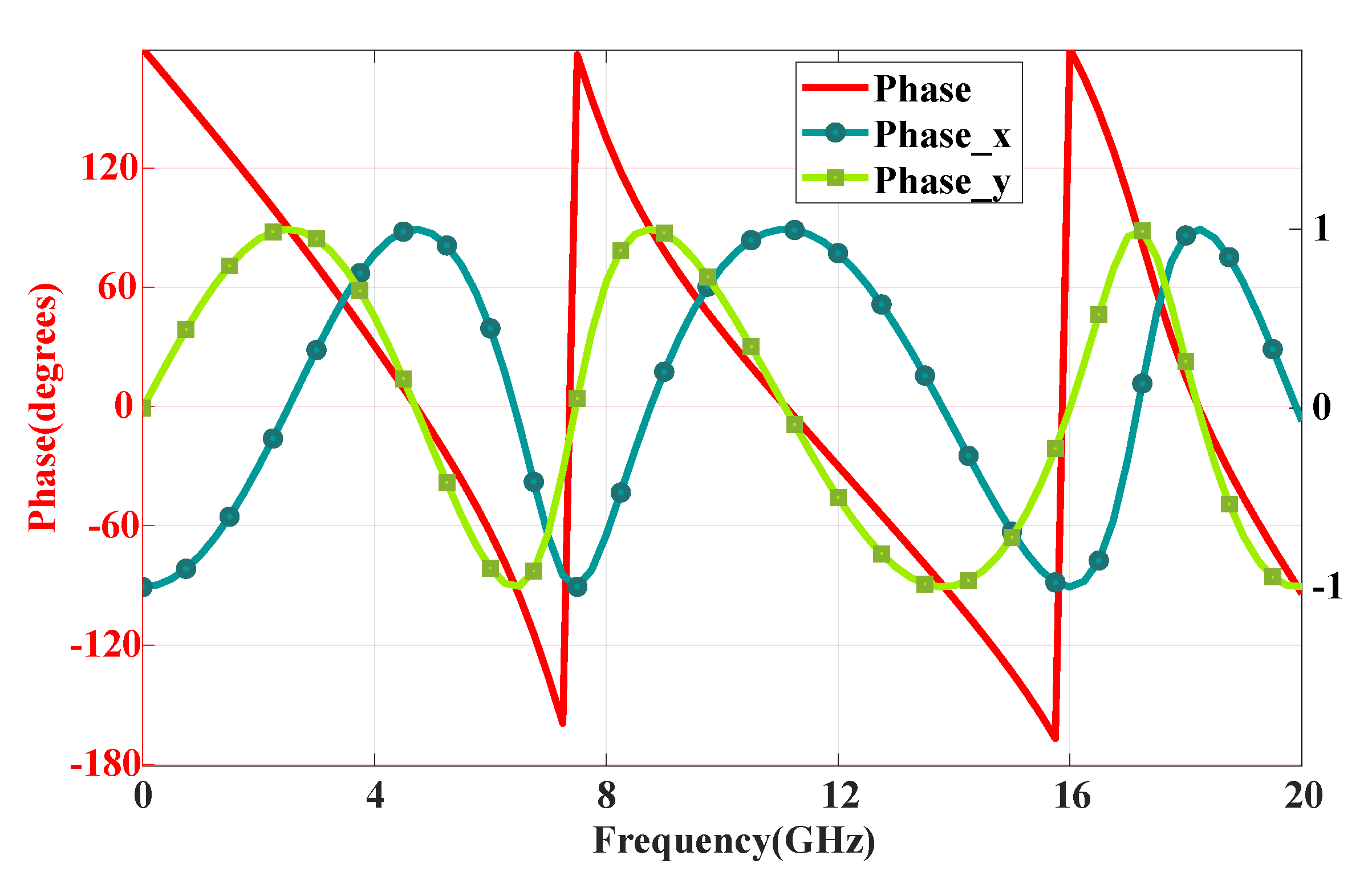
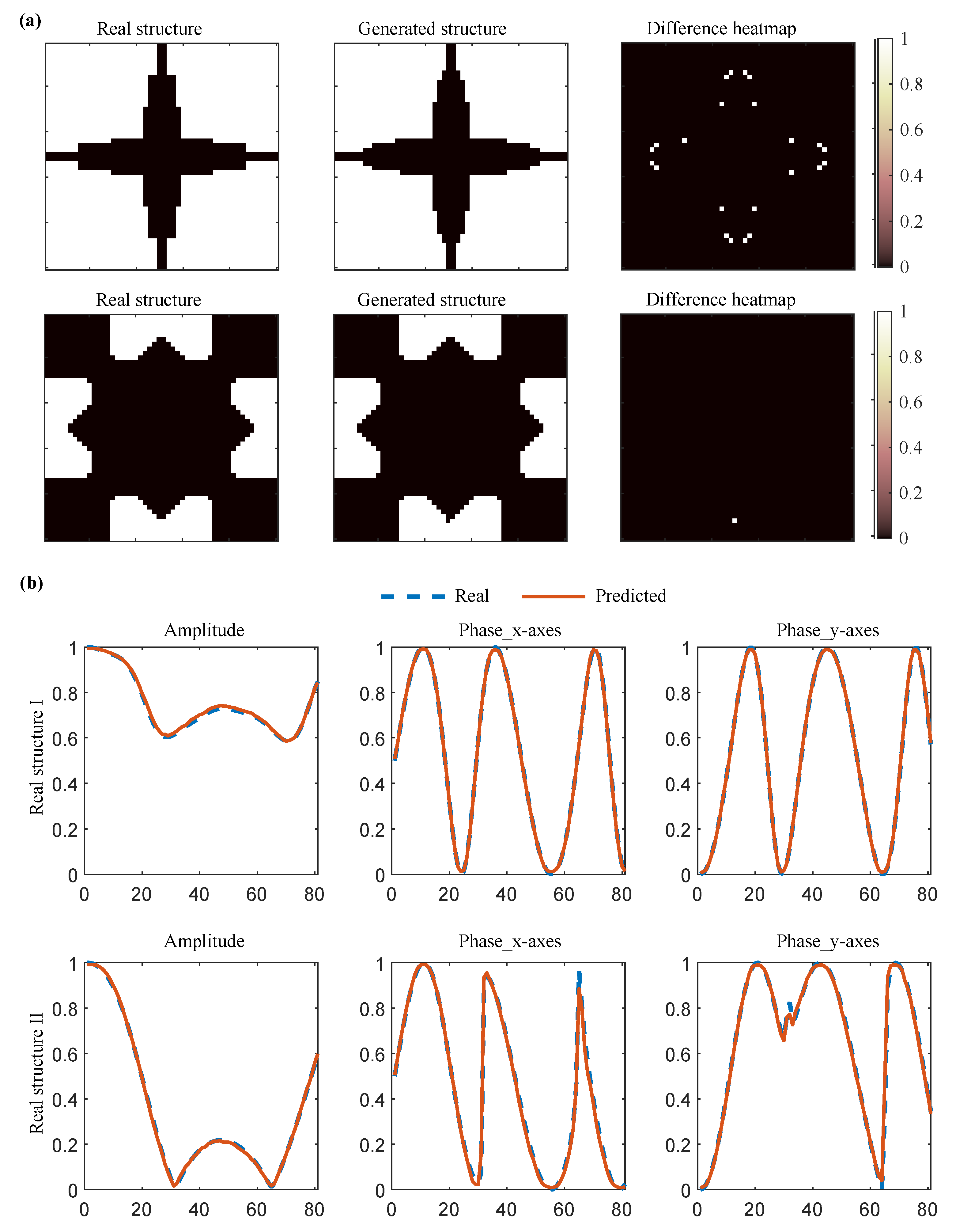
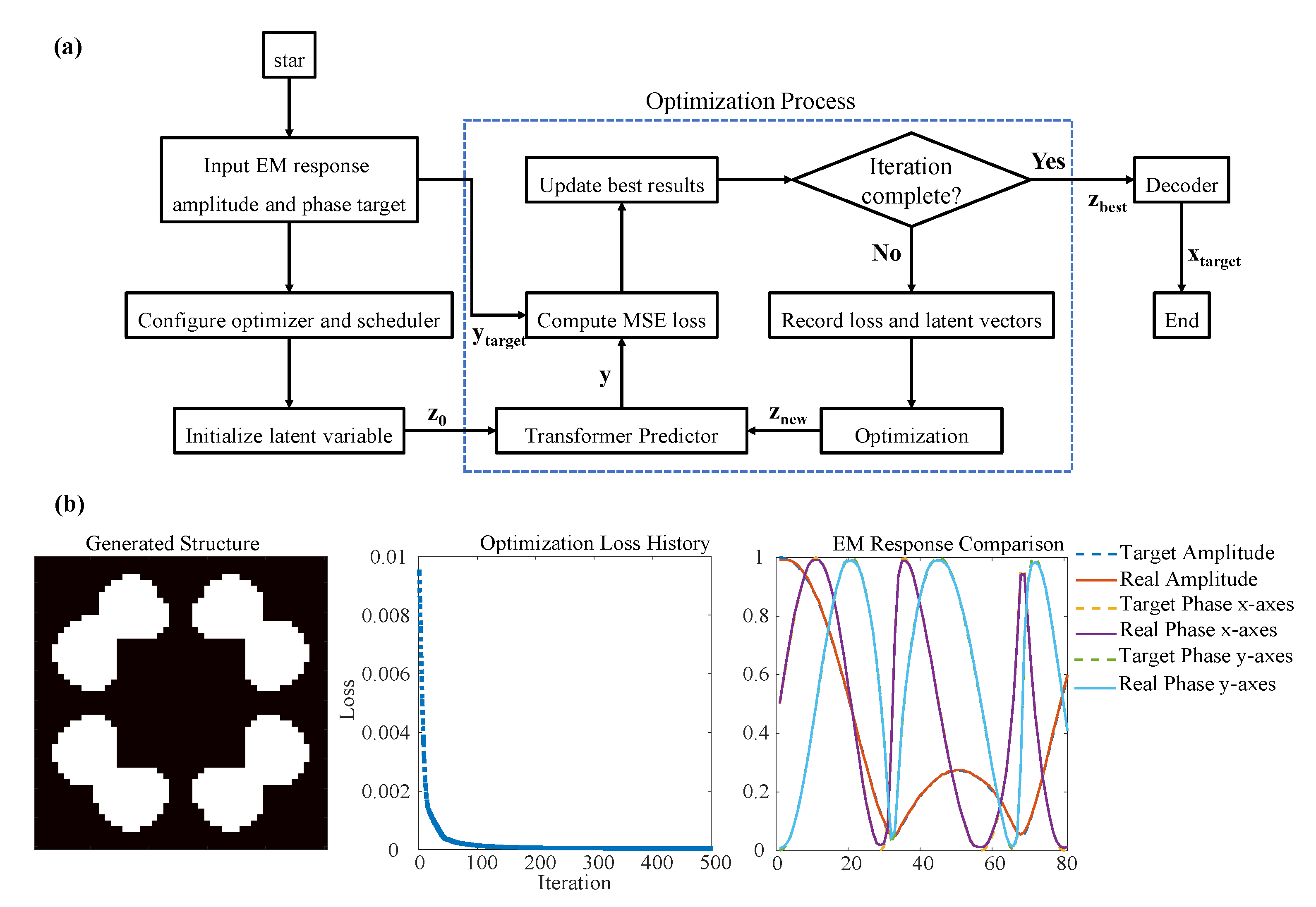

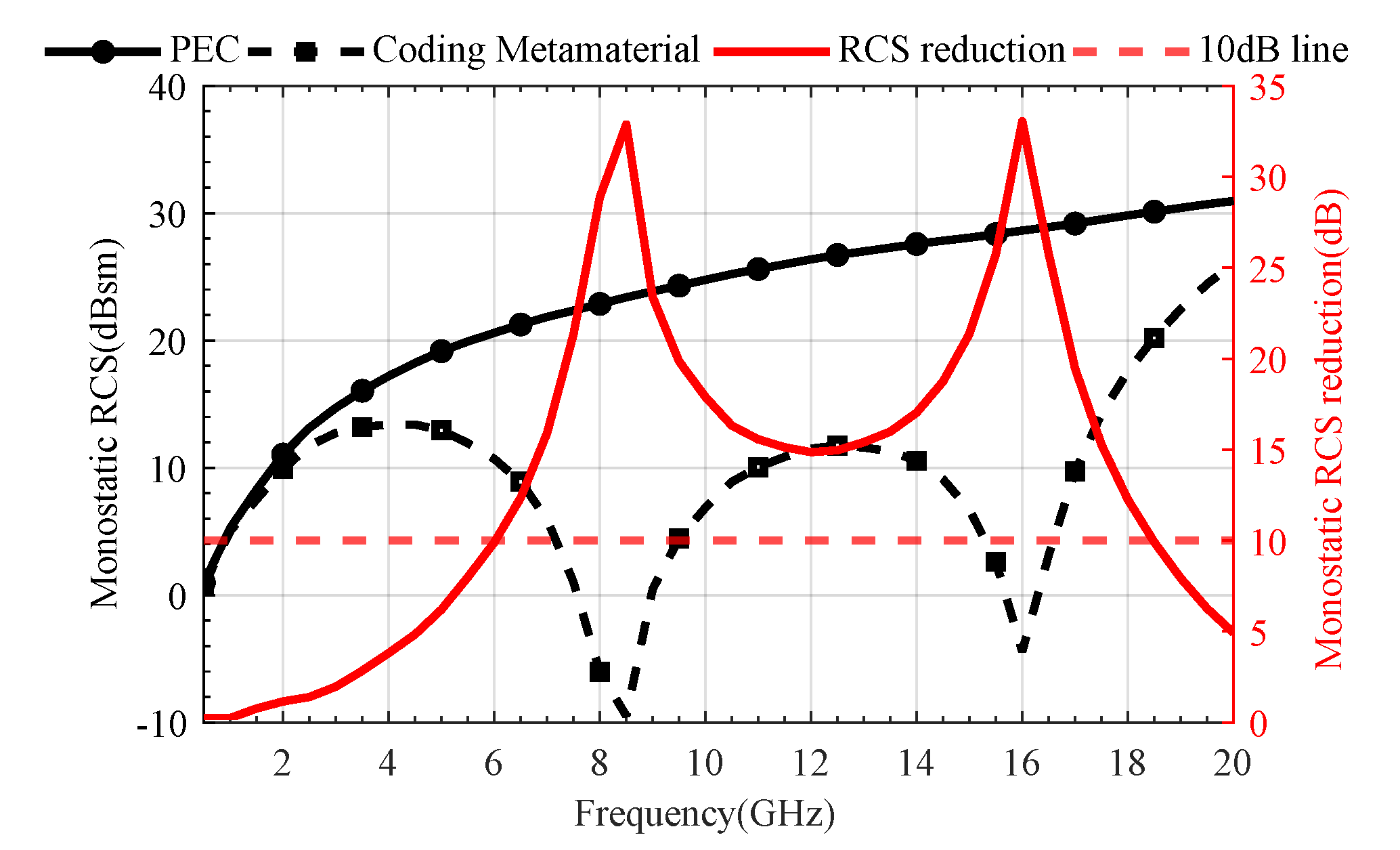
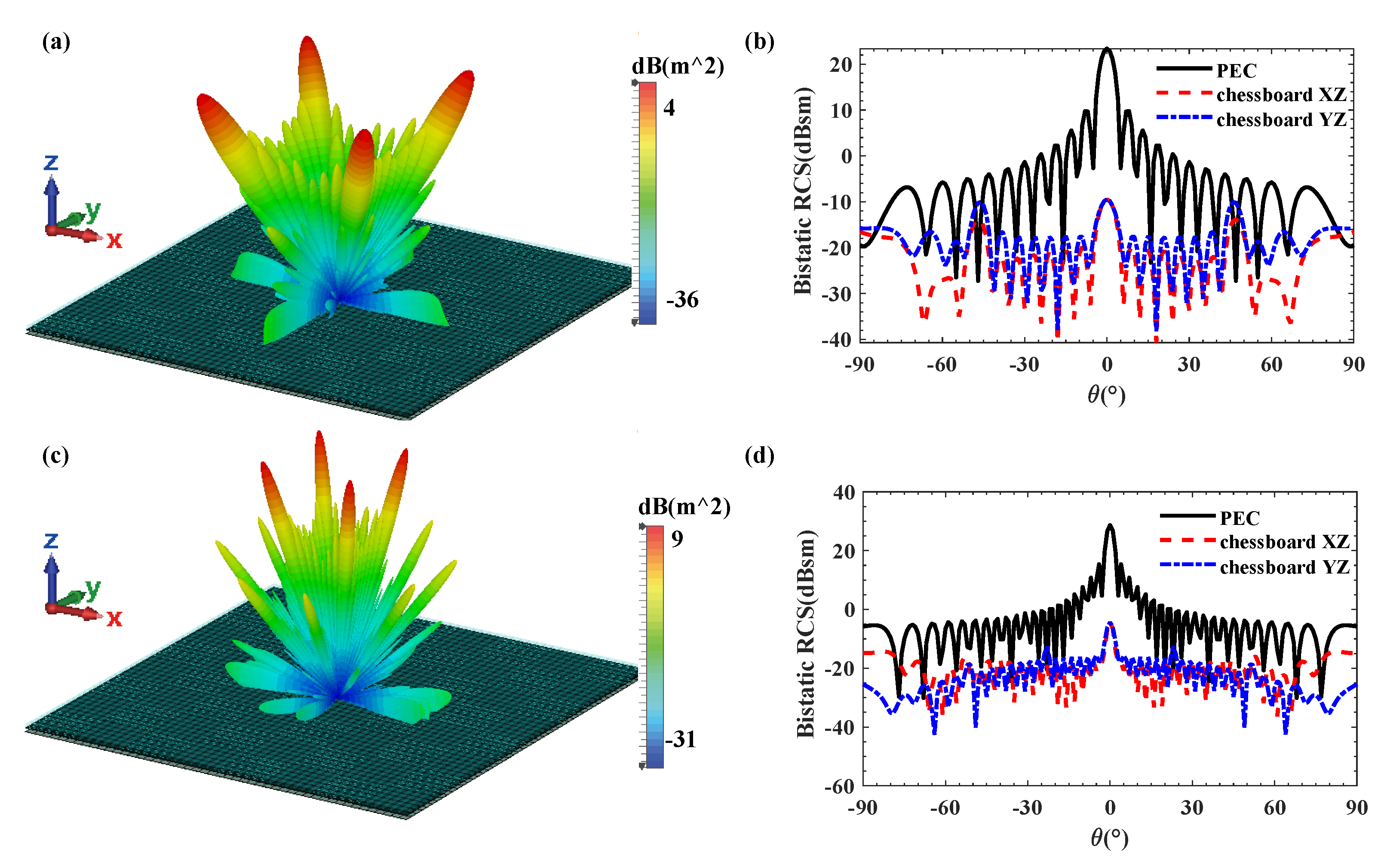


Disclaimer/Publisher’s Note: The statements, opinions and data contained in all publications are solely those of the individual author(s) and contributor(s) and not of MDPI and/or the editor(s). MDPI and/or the editor(s) disclaim responsibility for any injury to people or property resulting from any ideas, methods, instructions or products referred to in the content. |
© 2025 by the authors. Licensee MDPI, Basel, Switzerland. This article is an open access article distributed under the terms and conditions of the Creative Commons Attribution (CC BY) license (https://creativecommons.org/licenses/by/4.0/).
Share and Cite
Zhang, C.; Zou, C.; Guo, S.; Zhao, Y.; Shen, T. Deep Learning-Based Inverse Design of Stochastic-Topology Metamaterials for Radar Cross Section Reduction. Materials 2025, 18, 4841. https://doi.org/10.3390/ma18214841
Zhang C, Zou C, Guo S, Zhao Y, Shen T. Deep Learning-Based Inverse Design of Stochastic-Topology Metamaterials for Radar Cross Section Reduction. Materials. 2025; 18(21):4841. https://doi.org/10.3390/ma18214841
Chicago/Turabian StyleZhang, Chao, Chunrong Zou, Shaojun Guo, Yanwen Zhao, and Tongsheng Shen. 2025. "Deep Learning-Based Inverse Design of Stochastic-Topology Metamaterials for Radar Cross Section Reduction" Materials 18, no. 21: 4841. https://doi.org/10.3390/ma18214841
APA StyleZhang, C., Zou, C., Guo, S., Zhao, Y., & Shen, T. (2025). Deep Learning-Based Inverse Design of Stochastic-Topology Metamaterials for Radar Cross Section Reduction. Materials, 18(21), 4841. https://doi.org/10.3390/ma18214841






